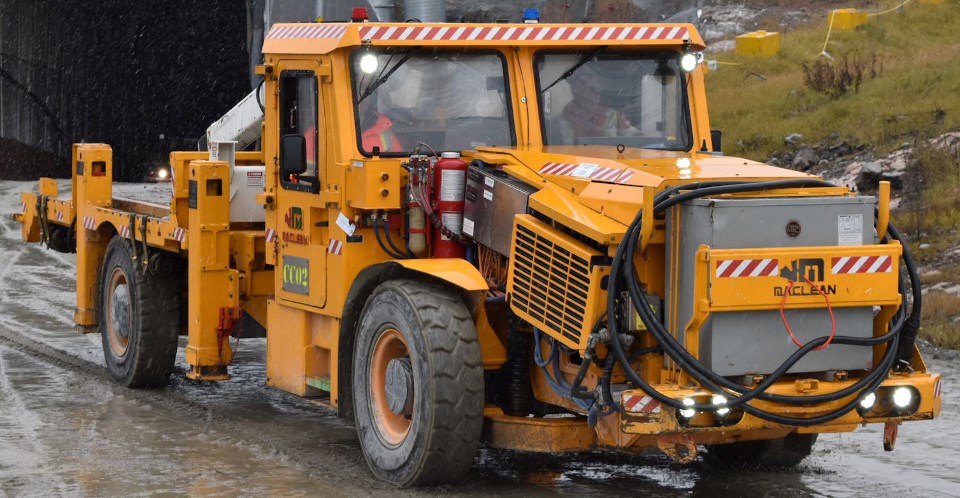Steve Gravel wants everyone in the mining sector to breathe easier and save money.
The manager of the Centre for Smart Mining at Sudbury's Cambrian College has a number of projects underway and in development, focused at making the area’s mining sector more competitive as a whole, not to mention healthier for its workers.
Cambrian has rolled out the Industrial Battery Electric Vehicle (BEV) Maintenance Certificate Program and is working on a BEV lab.
“My goal is to facilitate the adoption of new technology in the mining sector, for them to become more competitive and prosperous, more agile, and future-proof,” said Gravel.
“Mines are a major economic driver for the region, and we try to bolster them by helping companies innovate, as well as providing them a pipeline of highly trained students.”
Gravel said that the electrification of mining vehicles is happening at an increasing rate, creating an ever-widening skills gap in those that maintain current mining equipment.
Because of this, the Industrial Battery Electric Vehicle Maintenance Certificate Program will take in its first cohorts of in-service technicians this month. The program is two days per month, over four months.
“This is an upskilling program for in-service technicians, so that heavy-diesel mechanics can be more comfortable working on the new BEVs in the mines,” said Gravel. “We’ve spaced out the training to enrich, not interfere with their jobs.”
BEVs present a number of benefits to mining, according to Gravel.
“Ventilation costs can be half of a mine’s energy costs. Diesel requires more air to be pumped in, and more breaks for employees working in areas with high diesel particulates. BEVs present immense ventilation cost savings, employees are required to take fewer breaks, and of course there are many human health benefits. Save the climate, improve employee wellness, and save costs; everyone wins.”
Gravel said that even with a modest decrease in ventilation costs, mines can save millions a year.
Sign up for the Sudbury Mining Solutions weekly newsletter here.
Since BEVs are new technology and there are no surplus models available for training purposes, Cambrian has a partnership with MacLean Engineering whereby students go to their site to train on battery electric vehicles in the final segment of the program.
Cambrian also received a donation of three electric side-by-sides from Kovatera to allow students to learn about their drivetrain, powertrain, and human machine interface (HMI).
“The program was approved in December as a certificate program for the sector, which allowed us to move at the speed of industry; quickly finding a problem, socializing a solution, and evaluating that it has enough rigour and appropriateness,” said Gravel. “The industry response has been very encouraging.”
The Centre for Smart Mining’s next priority, a lab, came out of validating course content in discussions with industry. Equipment manufacturers said they need accurate third-party testing of powertrains for BEVs.
“They want to test at the powertrain level, in advance, to validate performance under simulated conditions for a typical duty cycle.” Gravel said.
“Better to avoid the costly mistake of finding out at the test bench, that you’ve sized a battery too small and that you can only get through a quarter of a shift, than after you’ve integrated it into a full piece of equipment. Mines have this data gap when it comes to BEVs that they didn’t have with diesel equipment.”
The Greater Sudbury Development Corporation has approved funding for the lab, and now Gravel is in discussion with provincial and federal funders and industry to make the dream a reality.
“The Centre for Smart Mining has done a number of BEV projects that justify our involvement in this lab,” said Gravel. “It is on trend and on brand for us.”
Gravel said that if funding comes through this spring, the goal will be to break ground in the summer and be open for the winter semester in 2022.
Before moving to Cambrian in 2019, Gravel worked for a provincial innovation funding group. He saw new global and transformational technologies, and hoped they would land in his backyard, as he was born and raised in Sudbury.
“We’re Canada’s mining college, and with these projects we can be the epicentre of battery electric vehicle training and development. Students would be able to walk down the hall and see the latest equipment not even commercialized yet, that they may be working on in a few months.” Gravel said.
“A move toward BEVs, evergreens and rejuvenates us, and it’s important for me to be a catalyst for that in a sector that was once known as a laggard for technology adoption.”
Aside from the specialized upskilling, the Centre for Smart Mining also works on a number of industry projects, from smaller fee for service jobs though transformational long-term proof of concept or pilot projects. They involve students in as many of the projects as possible for experiential learning and applied research.
The Drift features profiles on the people, companies and institutions making important contributions to Greater Sudbury’s mining sector. From exploration, operation and remediation to research and innovation, this series covers the breadth of mining-related expertise that was born out of one of the world’s richest mining camps and is now exported around the world.



